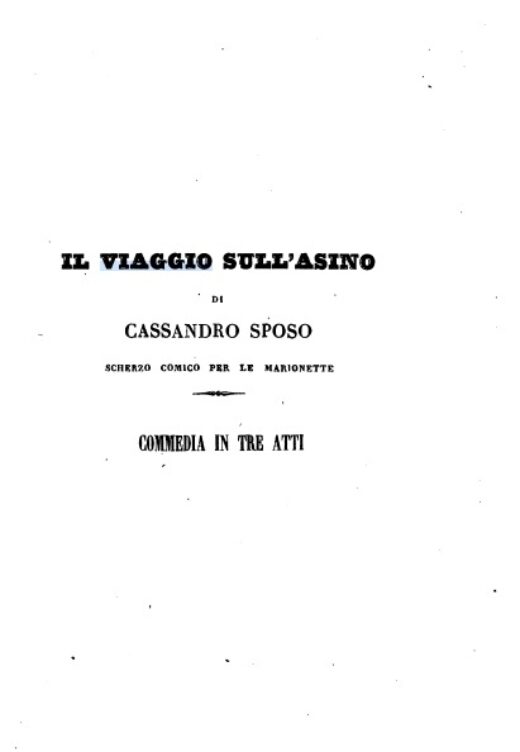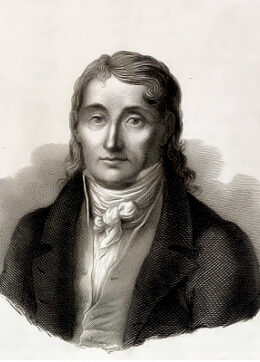
Printed
39 pages
Author(s)
Il viaggio sull'asino di Cassandro sposo
Il viaggio sull'asino di Cassandro sposo (The trip on the donkey of Cassandro, husband) stages traditional characters and themes. Indeed, it is specified in the prologue of the play that friends of the author asked him to write a show featuring Cassandro, for the puppet theatre Fiano in Rome. This text is a reference to the Viaggio a Civitavecchia (Trip to Civitavecchia) written by the puppeteer Filippo Teoli (1771-1844). As noted by Davide Marzattinocci (Cassandrino al Teatro Fiano, Edizioni Junior, 2006), Cassandro’s “fake death” may also evoke that of Pulcinella in the Commedia dell’Arte and in a traditional tale from Campania. The text of the play was published posthumously; it was pieced together again by the editor, using fragments and memories of certain scenes. Some parts of the dialogues are therefore missing; they are indicated by ellipses.
As the character travels, the change of setting was made with a painted canvas which unfolded and showed different localities one after the other.
A merchant sets out to meet his future wife
Cassandro, a merchant of about fifty years old, is in need of money: he has finally decided to marry, partly to benefit from his wife’s dowry. He must go from Rome to Albano for this wedding with a woman whom he does not know. He leaves with Rocco, his apprentice, on a donkey. On the way, Cassandro stops at a famous inn in which many Romans meet, eat, drink and sing some sorts of stornelli in verse. Cassandro and Rocco then set out again to meet the bride. A storm breaks out during the trip: the donkey stumbles, Cassandro falls, and Rocco and the innkeeper who has come to help him both think that he is dead. While the two men are busy taking care of the donkey, Cassandro comes round; but he pretends to be dead to see what will happen. The fiancée arrives with her brother and mother. They also believe that Cassandro is dead, but they need to pretend that he is alive to make him sign the marriage agreement and take his money. Thus, they drag the so-called corpse and arrange it so that it can be at the wedding and stand before the notary, whose sight is bad. They change the contract so that the two parties can fully enjoy the other’s possessions. However, Cassandro “comes back to life” when it is time to sign it. The wedding still happens: although the young bride is blind in one eye and not pretty, Cassandro reaps economic benefits from it and the bride’s parents must make the best of it. The friends from the inn join in the celebration.
First performance
Teatro Fiano, Rome
Publications and translations
Giovanni Giraud, Opere edite ed inedite del conte Giovanni Giraud, tomo 11. Roma : A. Monaldi, 1842
